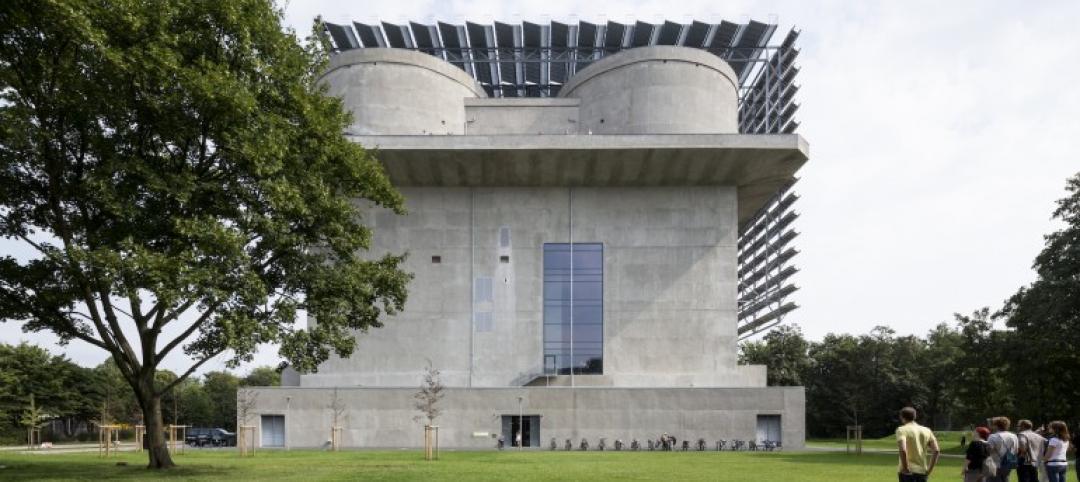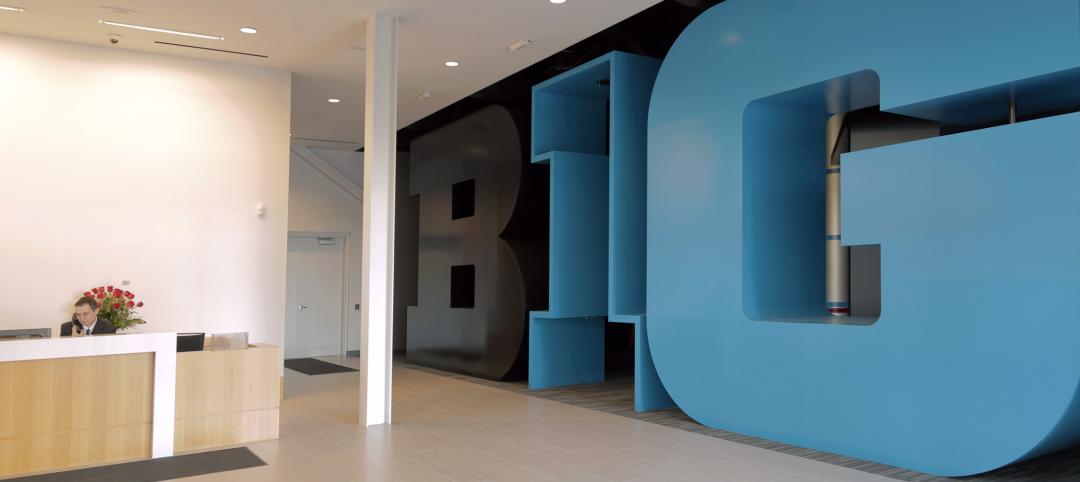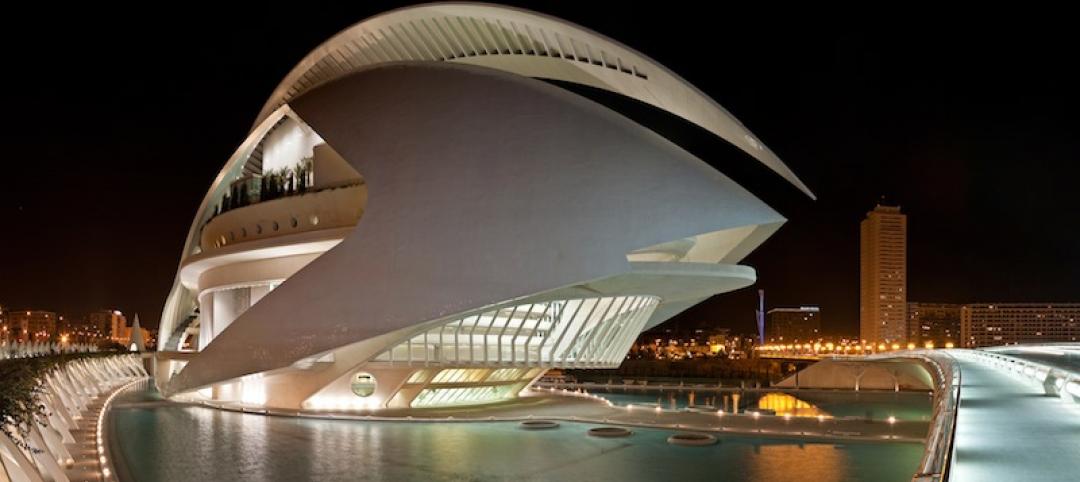The Philadelphia Art Commission has weighed in somewhat unfavorably on Robert A.M. Stern's design for the Museum of the American Revolution in Philadelphia.
According to The Inquirer, the commission didn't offically reject the $150 million proposal, but on Feb 5 it did communicate concerns about the building's design. Specifically, the commission asked Stern to eliminate a cupola, add eye-level windows on the ground floor, and rethink the building's composition.
The museum, supported by H.F. "Gerry" Lenfest, the Oneida Indian Nation, and the state of Pennsylvania, will exist in a space currently dominated by a red brick visitor center built for Philadelphia's Bicentennial in 1976. The commission has approved the demolition of the visitor center so that museum construction can start in the summer of 2014.
"This building really has a big-box-store mentality with a little bit of ornament attached," David B. Brownlee, a Penn art historian and vice chair of the Design Advocacy Group, told Inga Saffron of The Inquirer. Read the full report from The Inquirer.
Here is the firm's essay on the current design scheme for the museum (via www.ramsa.com):
The Museum of the American Revolution, anchoring the eastern end of Independence National Historical Park, is designed to introduce visitors to the American Revolution with its extraordinary collection of historical artifacts and contemporary interpretations demonstrating the continued worldwide importance of the Revolution.
Set amidst buildings of national and architectural significance—facing the First Bank of the United States (Samuel Blodgett, 1795), near William Strickland's Merchant's Exchange (1834) and the U.S. Custom House (Ritter & Shay, 1934)—the Museum will carry forward the restrained Classicism that heralded the birth of the Republic.
The Museum will address the corner of Chestnut and Third Streets with a broad plaza and an inviting entry facade that offers a glimpse at the treasures within through a two-story glazed portico. The museum shop and a café that opens to the sidewalk will enliven the Third Street facade; above, the wall that conceals the galleries will be articulated with brick quoining and recessed blind brick arches, accented with stone at the spring points and keystones and housing stone apsidal niches.
Our design organizes the Museum around a skylit central interior court. The ground floor will accommodate a multi-use theater and a changing exhibition gallery. Within the court a grand elliptical stair will take visitors up to 18,000 square feet of galleries and a theater dedicated to the exhibition of George Washington's marquee tent, one of the Museum's most dramatic holdings.
The Museum's third floor will offer rooms for conferences, symposia, and social events; two broad terraces overlooking the First Bank will command views to Independence Hall and the modern-day Philadelphia skyline.
The Museum will provide state-of-the-art storage and conservation spaces, following best practices for sustainable museum design to target LEED Silver certification.
The Museum will announce itself with a distinctive tower set directly above the lobby: atop a rectangular lantern with scalloped corners, sized to house a full-scale replica of the Liberty bell, will rise a cylindrical cupola with a bell-shaped roof that celebrates in a contemporary way the importance of our nation's founding.
Related Stories
| Feb 13, 2014
Extreme Conversion: Nazi bunker transformed into green power plant, war memorial
The bunker, which sat empty for over 60 years after WWII, now uses sustainable technology and will provide power to about 4,000 homes.
| Jan 30, 2014
How reverse engineering nature can spur design innovation
It’s not enough to copy nature. Today’s designers need a deeper understanding of environmental nuance, from the biome in.
| Jan 28, 2014
16 awe-inspiring interior designs from around the world [slideshow]
The International Interior Design Association released the winners of its 4th Annual Global Excellence Awards. Here's a recap of the winning projects.
| Jan 28, 2014
Big Ten Conference opens swanky HQ and museum [slideshow]
The new mixed-use headquarters includes a museum, broadcast studios, conference facilities, office spaces, and, oh yeah, a Brazilian steakhouse.
| Jan 13, 2014
Custom exterior fabricator A. Zahner unveils free façade design software for architects
The web-based tool uses the company's factory floor like "a massive rapid prototype machine,” allowing designers to manipulate designs on the fly based on cost and other factors, according to CEO/President Bill Zahner.
| Jan 11, 2014
Getting to net-zero energy with brick masonry construction [AIA course]
When targeting net-zero energy performance, AEC professionals are advised to tackle energy demand first. This AIA course covers brick masonry's role in reducing energy consumption in buildings.
| Dec 30, 2013
Calatrava facing legal action from his home town over crumbling cultural complex
Officials with the city of Valencia, Spain, are blaming Santiago Calatrava for the rapid deterioration of buildings within its City of Arts and Sciences complex.
| Dec 19, 2013
Mastering the art of crowd control and visitor flow in interpretive facilities
To say that visitor facility planning and design is challenging is an understatement. There are many factors that determine the success of a facility. Unfortunately, visitor flow, the way people move and how the facility accommodates those movements, isn’t always specifically considered.
| Dec 13, 2013
Safe and sound: 10 solutions for fire and life safety
From a dual fire-CO detector to an aspiration-sensing fire alarm, BD+C editors present a roundup of new fire and life safety products and technologies.
| Dec 10, 2013
16 great solutions for architects, engineers, and contractors
From a crowd-funded smart shovel to a why-didn’t-someone-do-this-sooner scheme for managing traffic in public restrooms, these ideas are noteworthy for creative problem-solving. Here are some of the most intriguing innovations the BD+C community has brought to our attention this year.
















